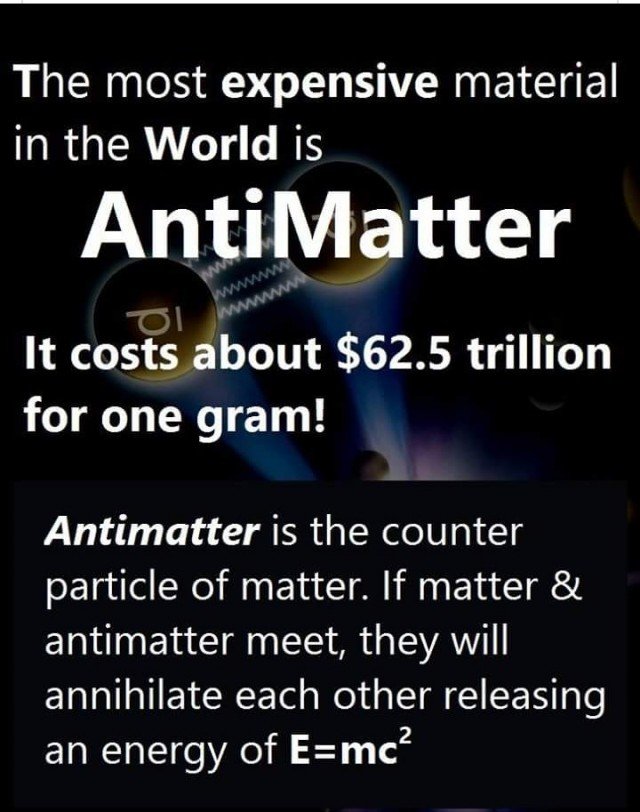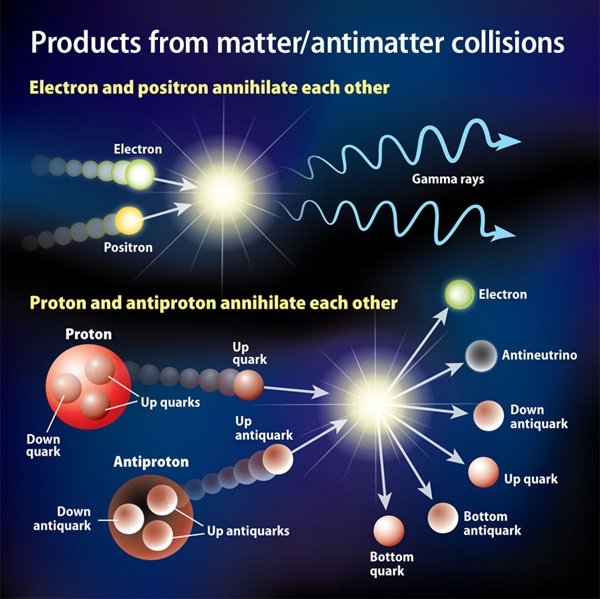In atomic and quantum physics, antimatter is a material composed of the antiparticle to the corresponding particles of ordinary matter.
In theory, a particle and its antiparticle (e. G electron and positron) posses same mass, but opposite electric charge and other differences in quantum numbers. For example, a proton has positive charge while an antiproton has negative charge. When a particle and its anti-particle collides mutual annihilation occurs, giving rise to various proportions of change in energy level which gives rise to emission of photons (gamma rays), neutrinos, and sometimes less-massive particle–antiparticle pairs which can lead to a big bang
During annihilation a considerable amount of energy is released which becomes available for heat or work. The amount of the released energy is usually proportional to the total mass of the collided matter and antimatter, in accord with the mass–energy equivalence equation, E = mc2.


Hi! I am a robot. I just upvoted you! I found similar content that readers might be interested in:
https://en.wikipedia.org/wiki/Antimatter
Downvoting a post can decrease pending rewards and make it less visible. Common reasons:
Submit
This post has been upvoted for free by @microbot with 0.1%!
Get better upvotes by bidding on me.
Downvoting a post can decrease pending rewards and make it less visible. Common reasons:
Submit